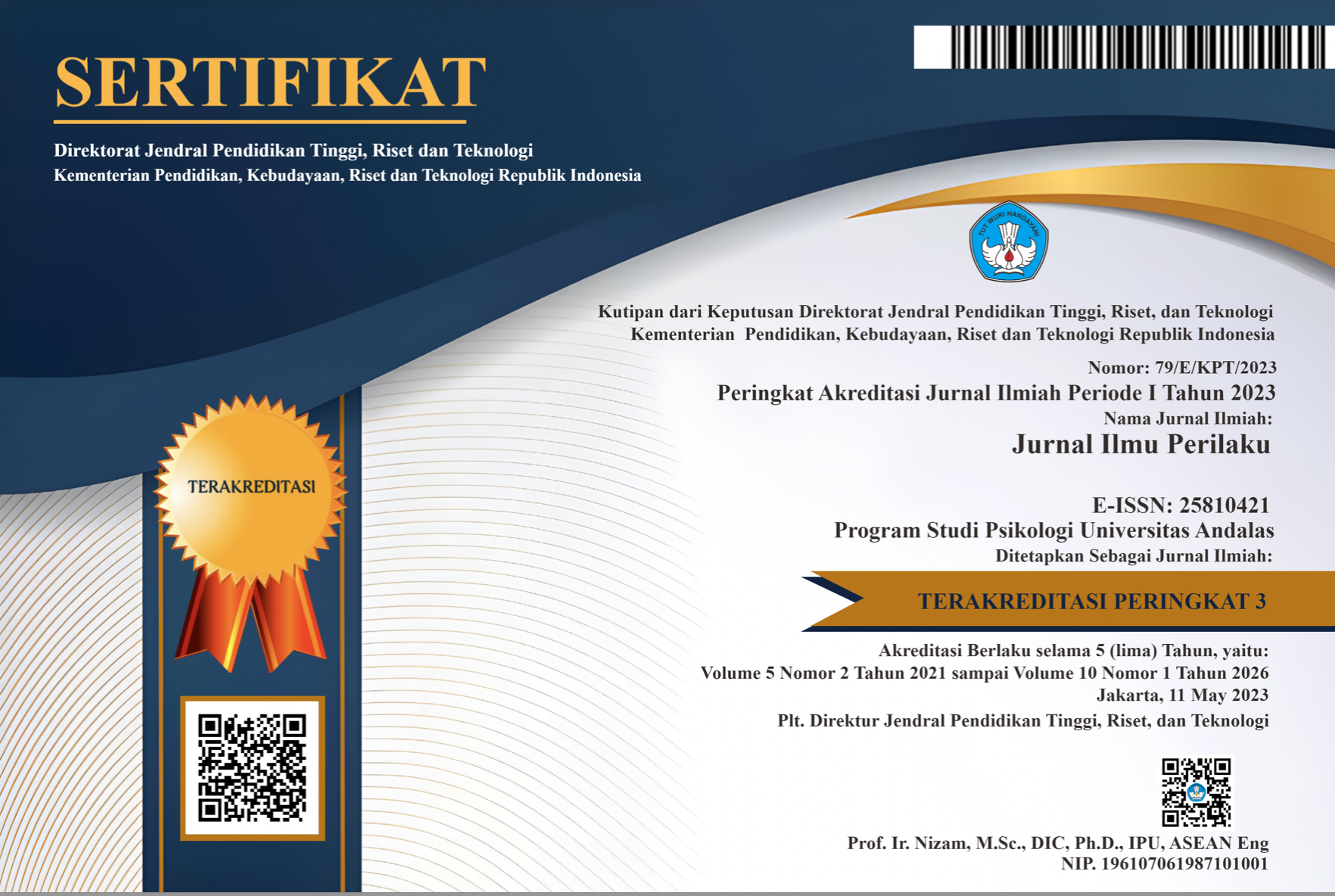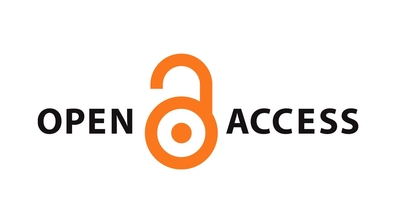Motif Individu, Karakteristik Konten Berita, dan Tingkah Laku Meneruskan Pesan Melalui WhatsApp
Abstract
WhatsApp is one of the most popular text-messaging mobile applications in Indonesia. Unfortunately, WhatsApp has also been found as a medium to spread false information. The current study explores what motivates individuals to forward messages on WhatsApp as well as the characteristics of information that they would forward to other users. Qualitative interviews to 20 WhatsApp users aged 19 – 78 years old were conducted to collect data. Participants reported several attributes that characterize surprising news or messages. A message is perceived as surprising if it is a breaking news or messages with unexpected or unheard information. Messages that feature events that took place with geographical proximity to them or to the person who received the forwarded messages are also considered surprising. Besides to inform friends and relatives about an event or information, participants’ responses also indicate that message forwarding serves as a conversation starter in direct messages or on WhatsApp groups. Participants’ responses indicate that forwarding surprising messages with unverified source reflect a lack of information literacy instead of a motivated or intentional act to disinform others.
Keywords: News sharing, Message Forwarding, WhatsApp
Downloads
References
Arun, C. (2019). On whatsapp, rumours, and lynchings. Economic and Political Weekly, 54(6), 30–35.
Berger, J. (2011). Arousal Increases Social Transmission of Information. Psychological Science, 22(7), 891–893. https://doi.org/10.1177/0956797611413294
Berger, J., & Milkman, K. L. (2012). What makes online content viral? Journal of Marketing Research, 49(2), 192–205. https://doi.org/10.1509/jmr.10.0353
Bobkowski, P. S. (2015). Sharing the news: Effects of informational utility and opinion leadership on online news sharing. Journalism and Mass Communication Quarterly, 92(2), 320–345. https://doi.org/10.1177/1077699015573194
Bright, J. (2016). The Social News Gap: How News Reading and News Sharing Diverge. Journal of Communication, 66(3), 343–365. https://doi.org/10.1111/jcom.12232
Creswell, J. W. (2009). Reseach Design: Qualitative, Quantitative, and Mixed Methods Approches. Sage Publication Inc. United States of America. https://doi.org/10.1163/22118993-90000268
Dimock, M. (2019). Defining generations: Where millennials end and generation Z begins. Pew Research Center, 1–7.
Duffy, A., Tandoc, E., & Ling, R. (2019). Too good to be true, too good not to share: the social utility of fake news. Information Communication and Society, 0(0), 1–15. https://doi.org/10.1080/1369118X.2019.1623904
Farooq, G. (2018). Politics of fake news: How WhatsApp became a potent propaganda tool in India. Media Watch, 9(1), 106–117. https://doi.org/10.15655/mw/2018/v9i1/49279
Gerbaudo, P., Marogna, F., & Alzetta, C. (2019). When “Positive Posting” Attracts Voters: User Engagement and Emotions in the 2017 UK Election Campaign on Facebook. Social Media and Society, 5(4). https://doi.org/10.1177/2056305119881695
Goh, D., Ling, R., Huang, L., & Liew, D. (2019). News sharing as reciprocal exchanges in social cohesion maintenance. Information Communication and Society, 22(8), 1128–1144. https://doi.org/10.1080/1369118X.2017.1406973
Guess, A., Nagler, J., & Tucker, J. (2019). Less than you think: Prevalence and predictors of fake news dissemination on Facebook. Asian-Australasian Journal of Animal Sciences, 32(2), 1–9. https://doi.org/10.1126/sciadv.aau4586
Kalsnes, B., & Larsson, A. O. (2018). Understanding News Sharing Across Social Media: Detailing distribution on Facebook and Twitter. Journalism Studies, 19(11), 1669–1688. https://doi.org/10.1080/1461670X.2017.1297686
Karapanos, E., Teixeira, P., & Gouveia, R. (2016). Need fulfillment and experiences on social media: A case on Facebook and WhatsApp. Computers in Human Behavior, 55, 888–897. https://doi.org/10.1016/j.chb.2015.10.015
Kim, H. S. (2015). Attracting Views and Going Viral: How Message Features and News-Sharing Channels Affect Health News Diffusion. Journal of Communication, 65(3), 512–534. https://doi.org/10.1111/jcom.12160
Kominfo. (2019). Tahun 2018, Kominfo Terima 733 Aduan Konten Hoaks yang disebar Via WhatsApp. Retrieved September 30, 2019, from https://kominfo.go.id/index.php/content/detail/3415/Kominfo+%3A+Pengguna+Intern et+di+Indonesia+63+Juta+Orang/0/berita_satker
Kümpel, A. S., Karnowski, V., & Keyling, T. (2015). News Sharing in Social Media: A Review of Current Research on News Sharing Users, Content, and Networks. Social Media and Society, 1(2). https://doi.org/10.1177/2056305115610141
Lazer, D. M. J., Baum, M. A., Benkler, Y., Berinsky, A. J., Greenhill, K. M., Menczer, F., … Zittrain, J. L. (2018). The Science of Fake News. Science, 359(6380). https://doi.org/10.1126/science.aao2998
Lee, C. S., & Ma, L. (2012). News sharing in social media: The effect of gratifications and prior experience. Computers in Human Behavior, 28(2), 331–339. https://doi.org/10.1016/j.chb.2011.10.002
Matassi, M., Boczkowski, P. J., & Mitchelstein, E. (2019). Domesticating WhatsApp: Family, friends, work, and study in everyday communication. New Media and Society, 21(10), 2183–2200. https://doi.org/10.1177/1461444819841890
Picone, I., De Wolf, R., & Robijt, S. (2016). Who Shares What with Whom and Why?: News sharing profiles amongst Flemish news users. Digital Journalism, 4(7), 921–932. https://doi.org/10.1080/21670811.2016.1168708
Quan-Haase, A., & Young, A. L. (2010). Uses and Gratifications of Social Media: A Comparison of Facebook and Instant Messaging. Bulletin of Science, Technology & Society, 30(5), 350–361. https://doi.org/10.1177/0270467610380009
Shu, K., Sliva, A., Wang, S., Tang, J., & Liu, H. (2017). Fake News Detection on Social Media. ACM SIGKDD Explorations Newsletter, 19(1), 22–36. https://doi.org/10.1145/3137597.3137600
Simon, T., Goldberg, A., Leykin, D., & Adini, B. (2016). Kidnapping WhatsApp – Rumors during the search and rescue operation of three kidnapped youth. Computers in Human Behavior, 64, 183–190. https://doi.org/10.1016/j.chb.2016.06.058
Swart, J., Peters, C., & Broersma, M. (2019). Sharing and Discussing News in Private Social Media Groups: The social function of news and current affairs in location-based, work-oriented and leisure-focused communities. Digital Journalism, 7(2), 187–205. https://doi.org/10.1080/21670811.2018.1465351
Trilling, D., Tolochko, P., & Burscher, B. (2017). From Newsworthiness to Shareworthiness: How to Predict News Sharing Based on Article Characteristics. Journalism and Mass Communication Quarterly, 94(1), 38–60. https://doi.org/10.1177/1077699016654682
Valenzuela, S., Piña, M., & Ramírez, J. (2017). Behavioral Effects of Framing on Social Media Users: How Conflict, Economic, Human Interest, and Morality Frames Drive News Sharing. Journal of Communication, 67(5), 803–826. https://doi.org/10.1111/jcom.12325
Vosoughi, S., Roy, D., & Aral, S. (2018). False News Is Big News. the Spread of True and False News Online. Science, 1151(6380), 1146–1151. https://doi.org/10.1126/science.aap9559
Waterloo, S. F., Baumgartner, S. E., Peter, J., & Valkenburg, P. M. (2018). Norms of online expressions of emotion: Comparing Facebook, Twitter, Instagram, and WhatsApp. New Media and Society, 20(5), 1813–1831. https://doi.org/10.1177/1461444817707349
WhatsApp. (2019). Tip untuk mencegah penyebaran rumor dan berita palsu. Retrieved September 30, 2019, from https://faq.whatsapp.com/en/26000216/?lang=id
WhatsApp. (2020). Keamanan dan Privasi ada di dalam DNA kami. Retrieved from https://www.whatsapp.com/security/
The non-commercial use of the article is governed by the Creative Commons Attribution license as currently displayed on Creative Commons Attribution-NonCommercial-ShareAlike 4.0 International License.
JIP's spirit is to disseminate articles published are as free as possible. Under the Creative Commons license, JIP permits users to copy, distribute, display, and perform the work for non-commercial purposes only. Users will also need to attribute authors and JIP on distributing works in the journal.
Please find the rights and licenses in Jurnal Ilmu Perilaku (JIP).
- License
The non-commercial use of the article will be governed by the Creative Commons Attribution license as currently displayed on Creative Commons Attribution-NonCommercial-ShareAlike 4.0 International License.
- Author’s Warranties
The author warrants that the article is original, written by stated author(s), has not been published before, contains no unlawful statements, does not infringe the rights of others, is subject to copyright that is vested exclusively in the author and free of any third party rights, and that any necessary written permissions to quote from other sources have been obtained by the author(s).
- User Rights
JIP's spirit is to disseminate articles published are as free as possible. Under the Creative Commons license, JIP permits users to copy, distribute, display, and perform the work for non-commercial purposes only. Users will also need to attribute authors and JIP on distributing works in the journal.
- Rights of Authors
Authors retain the following rights:
- Copyright, and other proprietary rights relating to the article, such as patent rights,
- The right to use the substance of the article in future own works, including lectures and books,
- The right to reproduce the article for own purposes, provided the copies are not offered for sale,
- The right to self-archive the article.
- Co-Authorship
If the article was jointly prepared by other authors, the signatory of this form warrants that he/she has been authorized by all co-authors to sign this agreement on their behalf, and agrees to inform his/her co-authors of the terms of this agreement.
- Termination
This agreement can be terminated by the author or JIP upon two months’ notice where the other party has materially breached this agreement and failed to remedy such breach within a month of being given the terminating party’s notice requesting such breach to be remedied. No breach or violation of this agreement will cause this agreement or any license granted in it to terminate automatically or affect the definition of JIP.
- Royalties
This agreement entitles the author to no royalties or other fees. To such extent as legally permissible, the author waives his or her right to collect royalties relative to the article in respect of any use of the article by JIP or its sublicensee.
- Miscellaneous
JIP will publish the article (or have it published) in the journal if the article’s editorial process is successfully completed and JIP or its sublicensee has become obligated to have the article published. JIP may conform the article to a style of punctuation, spelling, capitalization, referencing and usage that it deems appropriate. The author acknowledges that the article may be published so that it will be publicly accessible and such access will be free of charge for the readers.










